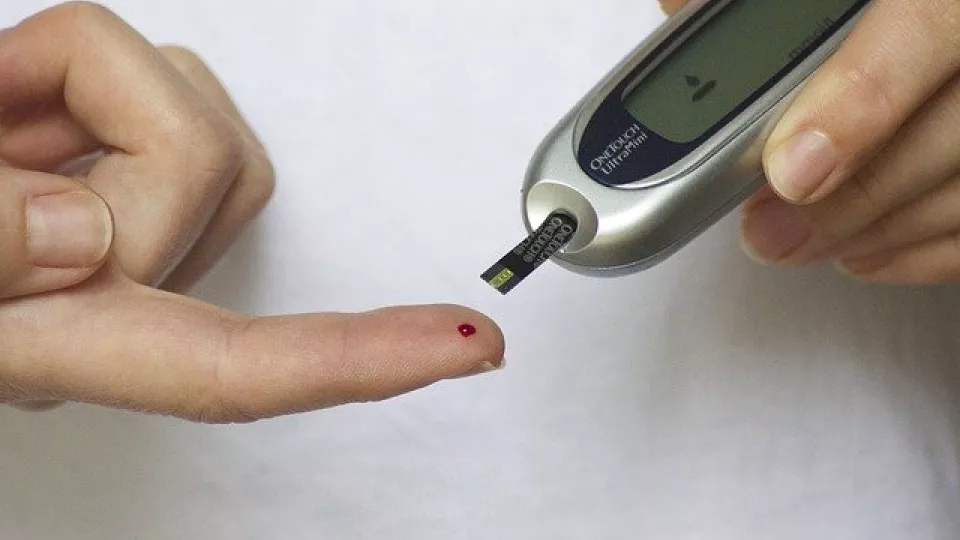Lars works at the Department of Medical Sciences at Uppsala University and he is initiator of the EpiHealth cohort study which is a collaboration between Lund and Uppsala universities. His research area is cardiovascular epidemiology. For the past ten years his studies have focused on genetics, proteomics which is the study of proteins, and metabolics that reveal the chemical processes in the body. He is using different methods, such as endothelial function and arterial stiffness measurements, as well as ultrasound, computed tomography and magnetic resonance imaging to evaluate the degrees of atherosclerosis in the coronary arteries, and carotid artery.
For this interview, we ask Lars to explain to the reader the risk factors of getting heart attacks in people with diabetes. “The risk of having a heart attack increases with an elevated blood glucose and by atherosclerosis that can cause a heart attack. In the case of type 2 diabetes, there is a link to cardiovascular disease via the so-called metabolic syndrome, a disturbance in the metabolism that leads to insulin resistance, high blood pressure, blood lipid disorders and abdominal obesity. All this together leads to arteriosclerosis and a reduced ability to dissolve blood clots”.
During the interview we discuss the mechanisms that determine why a person with diabetes has a doubled risk of getting arteriosclerosic diseases. “To determine this, we are investigating the molecular causes of arteriosclerosis. Changes in the innermost cell layers of the blood vessels lead to early changes in the development of arteriosclerosis. We are therefore looking at the changes that cause vascular complications in diabetes, such as endothelial function and arteril stiffness. A cardiovascular characteristic of patients with diabetes is increasing vascular stiffness which progresses with increasing age and longer diabetic duration”.
We continue the interview by asking Lars what a person with diabetes can do to strengthen heart and vessels. “A healthy lifestyle can effectively reduce the risk of a heart attack, stroke and heart failure, which includes quick walks, exercises at the gym, healthy food and smoking cessation. Today, 10% of 70-year-olds have diabetes, and 4% of 50-year-olds have the disease”.
Lars continues to explain that he is also using the EpiHealth cohort to find genes for diabetes and that they have a vast international cooperation where they are comparing more than a hundred different studies from around the world. “We collect genes for diabetes from many studies and EpiHealth is one of them”, says Lars. He continues “We also are also looking at the protein profile for diabetes to determine which ones that are altered. The next step will be to investigate how the proteins are linked to cardiovascular diseases. We have investigated more than 250 proteins so far. We compare the levels between people who have diabetes and people who do not have diabetes. It is our goal to map a diabetes profile and find mechanisms that can be used for therapies in the future. We have adjusted according to age in the analysis”.
We ask Lars at what age it is common to have a heart attack. “It is rare that a 25-year-old gets a heart attack, but it becomes more common at the age of 50 and onwards. The same applies to heart failure and stroke. Arteriosclerosis affects almost all 80-year-olds”.
We close the interview by asking Lars if some of the results from his research has surprised him. “When we started the study to find genes for diabetes now almost 15 years back, we expected to find 4-6 genes but there are in fact hundreds of them, and several mechanisms are involved. Genes lead to the expression of proteins and many proteins are important to understand why people get diabetes and why they have a risk of developing cardiovascular diseases. Everything is more complex than we expected, and we hope to contribute to research by adding more pieces to the puzzle”.
In the EpiHealth cohort we find genes for diabetes

Professor Lars Lind uses the EpiHealth cohort to investigate why people with diabetes have a higher risk of heart attacks and other cardiovascular diseases and how genetic factors can contribute to this. He is trying to map a diabetes profile to find mechanisms which can instigate the development of a therapy in the future.

